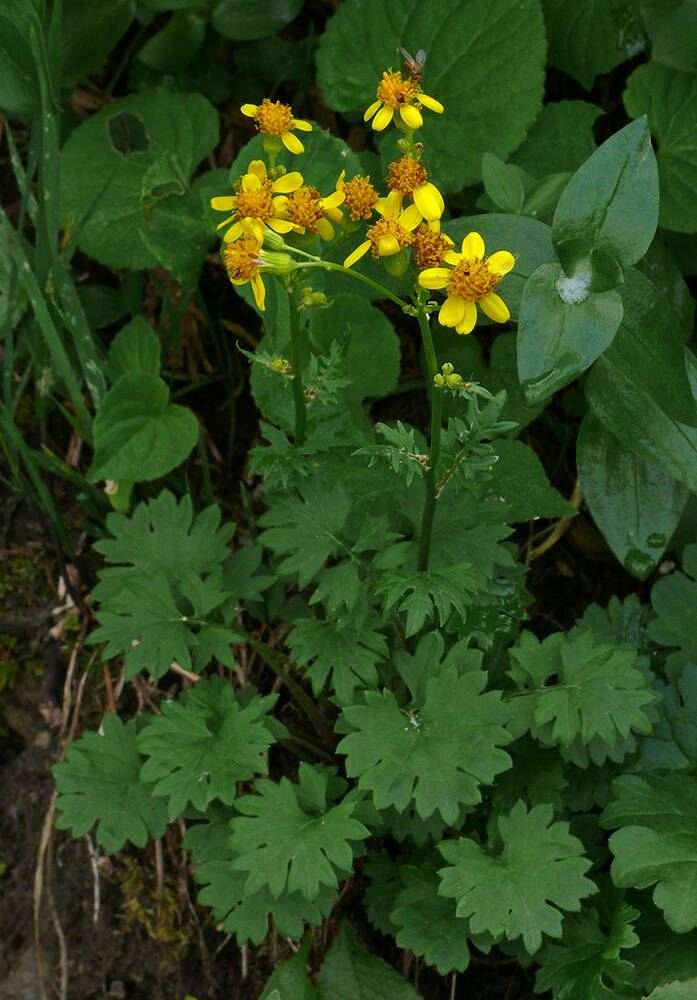Packera breweri
Packera
ragwort
single or clustered; erect, glabrous or pubescent.
alternate;
basal and cauline;
blades elliptic, lanceolate, linear, lyrate, orbiculate; ovate, reniform, or spatulate, often pinnately lobed to pinnatifid or pinnatisect;
margins entire or crenate, dentate, or serrate to denticulate, pinnately veined;
cauline much reduced; upper leaves bract-like, petiolate or sessile.
terminal heads; in compact or open corymb-, cyme-, or subumbel-like arrays, rarely heads solitary.
campanulate to cylindric.
flat;
paleae 0.
0 or 5–13, pistillate, fertile, pale yellow to orange-red.
20–80+; bisexual, fertile;
corollas pale yellow to orange-red;
tubes ? campanulate;
lobes 5; erect to recurved, usually ± deltate;
style branch tips usually truncate.
persistent, 8, 13, or 21 in 1 series.
0 or 1–5+ bractlets.
cylindric, tan to dark brown, glabrous or pubescent;
ribs usually 5–10, pappi of white, barbellulate bristles.
radiate or discoid.
Packera breweri
Packera
North America. 66 species; 10 species treated in Flora.
Packera is a segregate of Senecio. It contains species that were traditionally referred to as “aureoid senecios,” an informal group that was first recognized by Asa Gray. Base chromosome numbers of x=22 or 23 (as opposed to x=10) and a suite of morphological characters have traditionally been used in the circumscription of the genus. More recent molecular and palynological studies lend good support for the recognition of the genus. Species boundaries in the genus are notoriously imprecise, and polyploidy is common. Some species hybridize to some extent with others whenever they come into contact, while others are never known to hybridize. Authors of some studies on the more widespread species propose dividing the species into many varieties based on subtle differences in vegetative morphology, which are often overlapping and inconsistent, and on populational differences due to polyploidy. While recognizing the value of such work in understanding evolutionary relationships, I have taken the view that splitting these species into many varieties based on these difficult characters does little to help with their identification in the field, and these proposed varieties are not supported by molecular data.
Debra Trock
- Local floras:
CA,
OR,
WA
- Local Web sites:
CalFlora,
CalPhotos,
Flora NW,
PNW Herbaria,
Turner Photog.
WildflowerSearch
iNaturalist (observations)
- LBJ Wildflower Center
- SEINet
- Plants of the World Online
- Encyclopedia of Life
- Wikipedia
- Google Image Search


